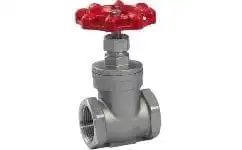
Generally speaking, the stainless steel gate valve can only be stainless if the chromium content reaches at least 11%. If the chromium content is insufficient, the valve surface won't form a chromium oxide protective film, which will lose the function of rust prevention. If the chromium content is enough, the valve won't rust at a normal temperature.
Common stainless steel gate valves are made by casting and forging, which are often made of materials such as cast steel CF8 (forged steel F304), cast steel CF8M (forged steel F316), cast steel CF3 (forged steel F304L) and cast steel CF3M (forged steel F316L).
Common Materials of Stainless Steel Gate Valves are as follows:
- Ferritic stainless steel gate valves: The chromium content is 12% to 30%. Its corrosion resistance and toughness increase with that of the chromium content. This kind of valve has good oxidation resistance and stress corrosion resistance.
- Austenitic stainless steel gate valves: The chromium content is more than 18%, and they contain about 8% nickel and a small amount of molybdenum, titanium, nitrogen and other elements. They have good comprehensive performance and can resist corrosion of various media.
- Austenitic-Ferritic duplex stainless steel gate valves: They have superplasticity and advantages of both austenitic and ferritic stainless steel gate valves.
- Martensitic stainless steel gate valves: They have advantages of high strength, poor plasticity and weldability.
